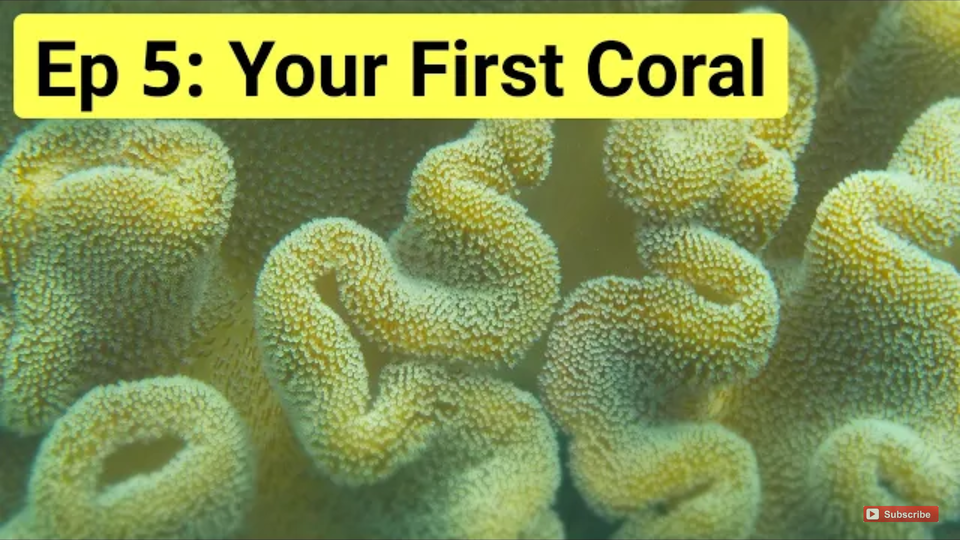Choosing your first coral: A complete guide
- Feb 20, 2021
- Anshika Mishra
- 519 0 0

One of the most commonly asked questions for beginners is when can I add my first coral. Well, patience is the name of the game here because nothing good happens quickly in a reef tank. New tanks go through all sorts of changes with various blooms and outbreaks that tend to burn themselves over time.
When the first coral should be added?
While all that is perfectly normal, corals crave stability so it is best to wait for at least 2-3 months before you even think about adding your first coral. Nobody has ever regretted letting their tank settle for too long. Conversely, if you shoot your bolts too soon your will probably end up watching your shiny new corals fade and die.
A good sign of when your tank is ready is when Coraline algae start to grow as it requires similar conditions as corals, but a better sign is when your key parameters are nice and stable.
The main things to get stable are:
- Salinity and temperature
- Nitrate and Phosphate
- Alkalinity, Calcium, and Magnesium
So, test these parameters every week and wait until they are steady, and when they are you are ready to go.
Choosing the first coral
While choosing your very first corals you should look for the hardiest corals you find pretty which may include Leather corals and green star Polyps as they are pretty much bombproof. Another excellent choice would be, although they are less indestructible and can wither die for no apparent reason, the same can be said for Zoas and Xenia.
Both Zoas and Xenias are spectacular in that they are with the increase in risk, they also grow brilliantly under blue LEDs.
Pretty much all beginner-friendly coral will spread very quickly, so try to place them somewhere they can't spread too fast. On their own island is ideal, or you can at least stick them on a rock that isn't directly joined to your other rock works.
Things you should avoid
SPS corals
Buying online is fine, but it is much better to buy your first coral on shop, so you can see with your own yees and bother the shopkeeper with all your noob questions. You surely want to avoid SPS corals at all costs as they require strong light and flow and are far far less forgiving of imperfect water conditions.
LPS corals
They will also drain your tank elements like alkalinity and calcium very quickly which will crash your tank in no time. They should also be avoided because they will also deplete elements from your water that will need to be replaced. Some of the things it is better safer when you have mastered the basics and you are ready to level up.
But if you are willing to have LPS, some decent beginner-friendly options will probably be fine in a tank with a solid water change regime.
Anemones
You should also avoid Anemones which are notorious for failing in tanks under six months to a year old. You clownfish don't need an anemone and will make themselves a home in various other corals in your tank or even more commonly just in the top corner of your tank buy your outlet nozzles for reasons science has yet to explain.
Rock Flower Anemones are a decent choice if you insist on having an Anemone of some kind as they are much harder than your usual bubble to Anemone and they are also exceptionally pretty which is ultimately why we are all here.
Treatment is always required
Whatever corals you buy you absolutely must dip it some kind of treatment before it goes into your tank. Corals often have dangerous pests on them regardless of wherever you've bought them from a fellow hobbyist or a reputable retailer.
Dipping is very easy and should be part of your regular acclimation procedure. Firstly rest the bag on your tank for half an hour for equalizing the temperature, then pour the water into your dipping vessel and follow the instructions for whatever treatments you choose which is usually to stir the water occasionally and let your crabs sit in the dip for five to ten minutes.
Afterward, you can remove the coral and place it in a low light tank, but the low light part is important as corals will bleach and die if the light is too strong but they will be right as rain in gentle light for at least the short-medium term.
It is not important to add coral food to your coral because they mostly feed and thrive on light. Dosing things like calcium and alkalinity also isn't necessary at all if you are carrying out weekly water changes. Just keep an eye on your levels and think about supplementing them if they fall off too much.
Once you have added your first coral just keep up with the weekly water changes and regular water testing.






About author